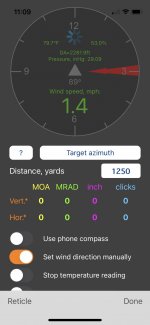Lately, it feels like guys push rimfire like crack in the '80's lol.

I don't want to shoot rimfire. There I said it lol.
I belong to a club that goes out to 1250 yards that takes me an hour plus and an hour plus back to get to, so I might as well shoot cartridges that recoil like real guns instead of not at all (like a 20+LB NRL22 .22LR doesn't), at targets way the fuck out there lol.
I feel like getting into rimfire would be a poor quality of life decision for me.
To me, it's almost like... for guys who get addicted to watching porn instead of having IRL sex with their wife/girlfriend/partner lol.
(kidding not kidding lol, but lets not drail the thread here hahahaha)





